The reconstruction and revival of the monastic life today is, as always, based on the renewed practice of the eucharistic and hesychastic life in the parishes, and the monasteries (it is the fruit of repentance of the people).
The Tradition about the Jesus prayer in Macedonia and in Matka is an inseparable part, never ceasing, from the apostolic times until today. And although we know that the flame of the Jesus Prayer constantly burned in the hearts of the prayerful hesychasts, in the heart of the living Tradition of the Holy Fathers, in certain moments it was intensely burning.
We will follow exactly the continuity of the ascetical-hesychastic Tradition in Matka and in Macedonia, through these figures, these lights, that were willing to deny themselves and, sacrifice themselves for God and their fellow men. They testified and preached about Christ in this territory, they were burning in order to glow even today.
MACEDONIAN RENAISSANCE, Late Byzantium (IX-XI century)
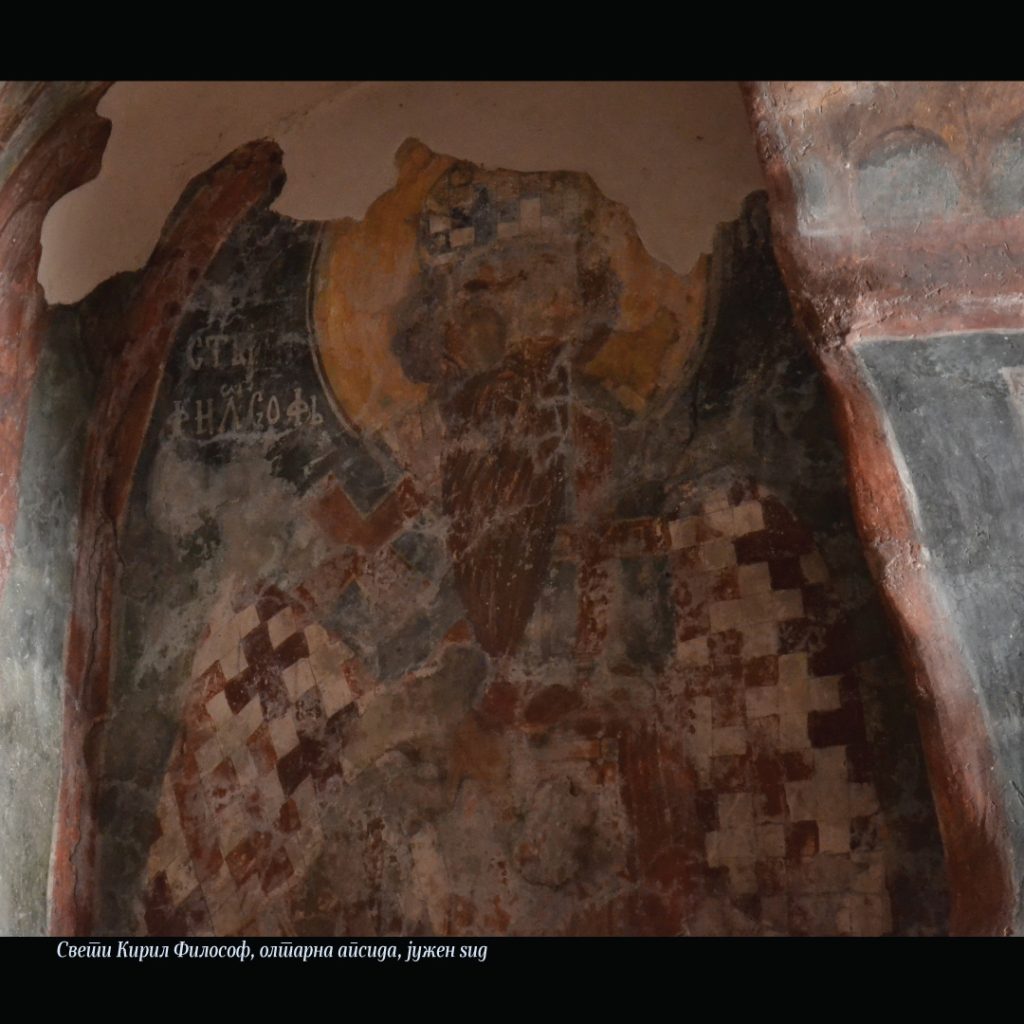
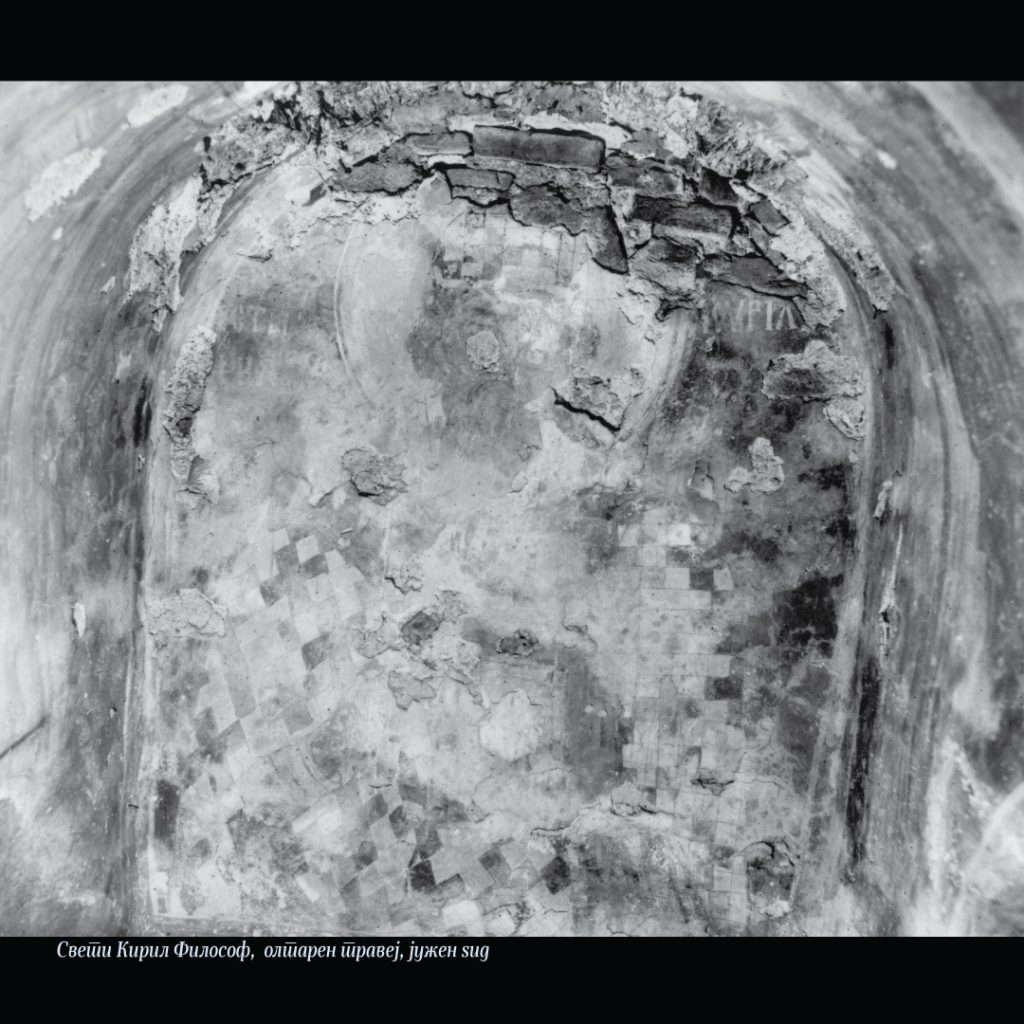
Saint Cyril and Methodius
Generally, the emergence of the monasticism in Macedonia, (whose part is Matka as well), can be traced from the time of St Cyril and Methodius, and especially their holy disciples, St Clement and Naum, who launched the Christianisation of the Slavs.
St Cyril and Methodius were born in Solun (Tessaloniki). St Methodius, during the time of the iconoclastic heresy, went to the Olympus monastery, where he became a monk and even an abbot. St Cyril was especially gifted (even as a child he loved the written work of St. Gregory the Theologian. He would read them constantly, and knew many of them by heart), and so was sent to the well known school in Carigrad (Constantinopole). He became a monk, and then returned. As a monk, he taught philosophy, and he was also a librarian. As an experienced teacher and a Christian he was sent to preach, together with Methodius, to the Khazars and Slavs .
“And these two, blessed and God-fearing men, didn’t show themselves as lesser than them (from Moses and Aaron). Fed with the same Spirit of God from the above, and once they were deemed worthy of a doubled grace, they guided the people from the dark demonic sea, they flooded the pharaoh (the Satan) and destroyed all of his power. Once they were armed with faith and with the power of the Cross, they guided the people not in the desert, but they guided them into the knowledge of God. They did not draw water from a stone like Moses and Aaron, but they quenched the thirst of the thirsty with the faith in the Word of God. They did not draw water of a cold stone, but with the blood and water that flowed from the all-pure ribs of our Lord Jesus Christ, to the faithful they passed the eternal food and endless life of salvation; they fed (the people of God) not with bread of the angels, but for the forgiveness of sins they gave them the very body of our Lord Jesus Christ… they were not preachers of the slaughtered victim, but they became servants and ministers of the bloodless, peaceful spiritual service. After they thoughtfully took their cross apon their shoulders, they went around the whole world… and, like with sunrays, they enlightened the whole world with the Light of the knowledge of God.”
St Cyril reposed in Rome on February 14, 869AD, after receiving the great schema. St Methodius, together with his disciples continued to preach to the Slavs, in the Slavic language. Even though he was an archbishop of Pannonia, he spent three years in prison, but after he was released, and until the end of his life, he was forced to defend himself from the constant accusations of the German clergy. He died in the year 885AD.
After the death of St Methodius, his disciples, as well as the fragile Slavic Church, were exposed to persecutions. These new-apostles, many of whom felt the shackles and the iron doors of prisons in Germany, nonetheless continued their mission with the Southern Slavs.
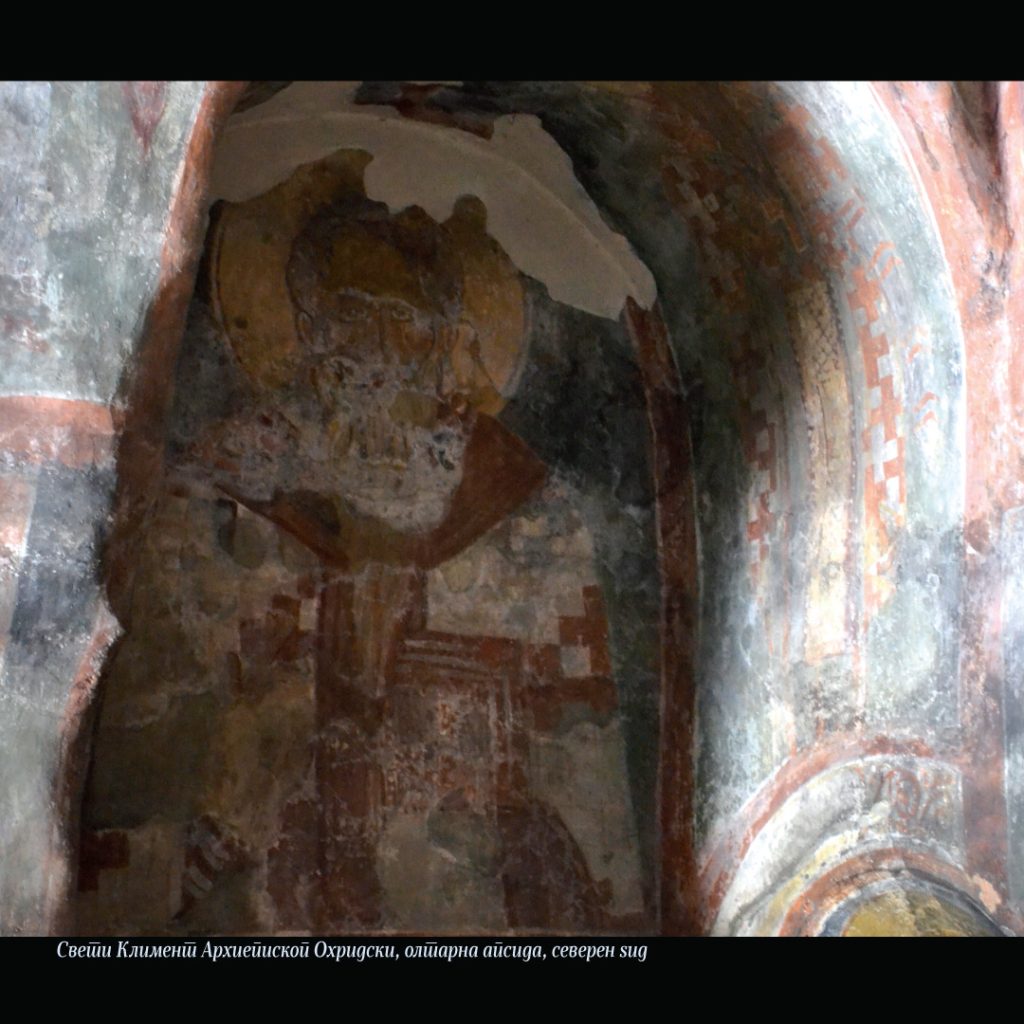
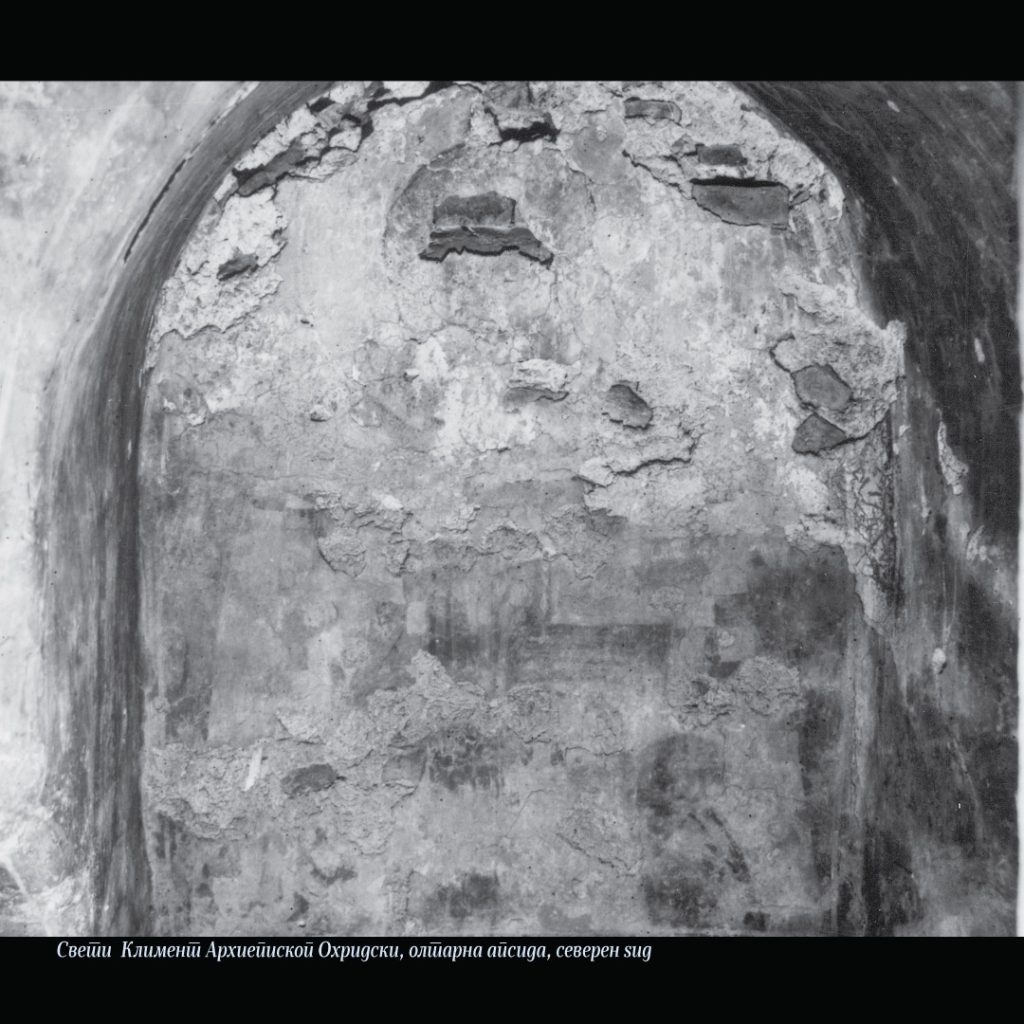
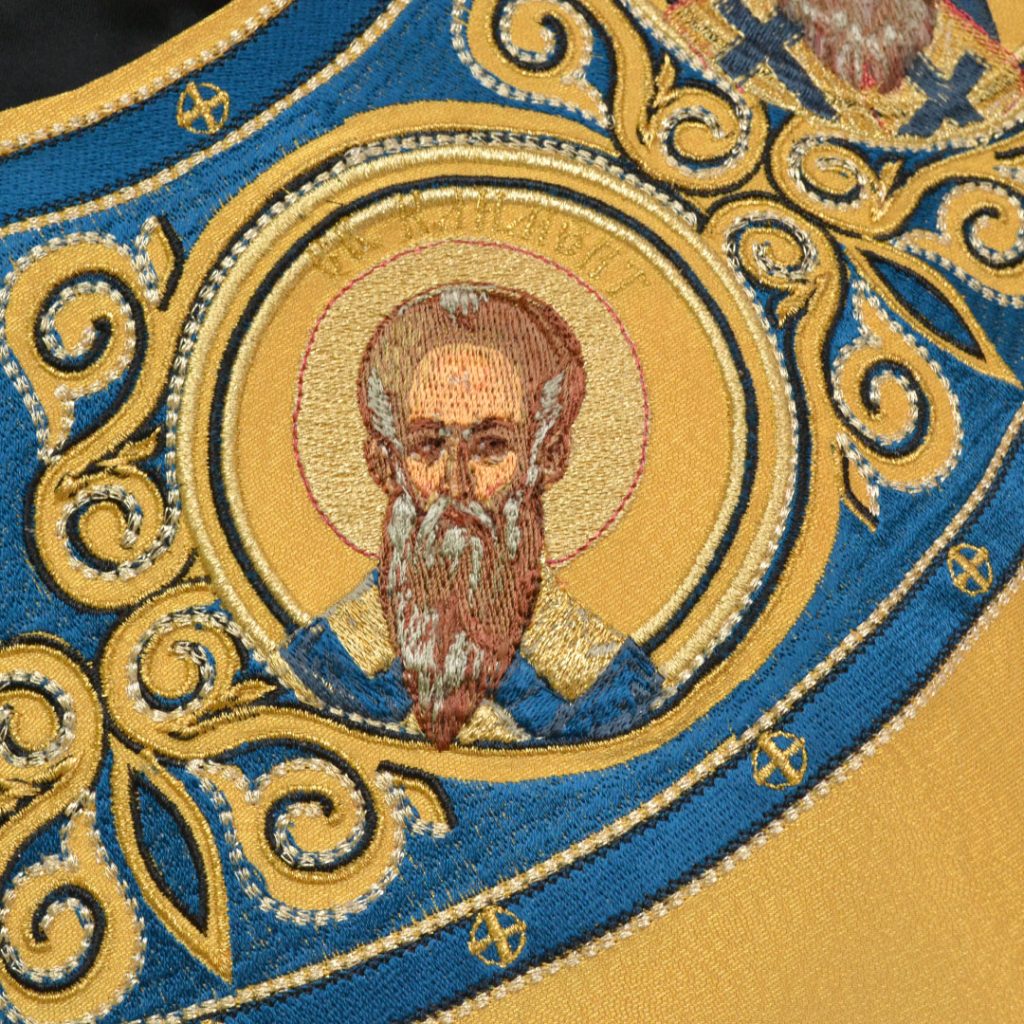
Saint Clement and Saint Naum
Saint Clement and St Naum, were sent by the Bulgarian Tsar Michael (in monasticism he was called Boris) to preach in Macedonia. St Clement was tireless in his teachings and his writing, and was appointed as a teacher in the village Kutmichevica, and also received a place to rest in Ohrid. In 893AD. St Clement was ordained in a Clergy and Laity Assembly, as the Dremvic/Great bishop, and in his place (in Kutmichevica) was appointed St Naum. The priests and the other clergy were trained and educated in the Slavic language, and they then introduced and spread the Slavic language in the all worship services. In each parish were working 300 selected disciples (teachers, pastors, clergy), their total number being 3500. In the Ohrid literary center, St Naum worked for seven years. This school had the charter of a university institution with complete rights, and it is considered to be the the first university in Europe. All of this effort has born ample fruit since that time.
In the 900AD, on the shore of the Ohrid Lake, St Naum founded a monastery dedicated to the Holy Archangel Michael and to all holy and heavenly bodiless forces, which was consecrated by Bishop Clement, who, on the opposite shore, founded a monastery dedicated to St Panteleimon. By withdrawing into the monastery, St Naum built the foundation of the monasticism in Macedonia, and around him gathered a multitude of monks from the whole Balkan region. He was a wise teacher, God-fearing leader of the monks, strict ascetic, a miraculous prayer-man and a spiritual father. He performed many miracles during his lifetime and even after his death. From his miraculous relics even today occur numerous miracles, healing of deadly diseases, especially madness and demon possessed people. The blessed Naum died of old age, and gave his soul to God on the 23rd of December, 910AD. Six years later, St Clement also died. In the late 10th century, the Saints Clement and Naum became canonised saints. Besides the translations, there are many preserved works of St. Clement (and several of St Naum), including some of sermons spoken during his liturgies, in which, with simplicity, he speaks of the basic dogmas of faith – the Holy Trinity, the Incarnation, the Birth, the Resurrection of Christ, the Baptism, the Communion, the Ascension.
With great love, he led His God entrusted flock to Christ. St Clement, who even during his lifetime, was revered as a saint, died on 27th of June, 916AD. His relics were laid in his monastery of St. Panteleimon.
About the Dormition of the Most Holy Theotokos.
“There, a celebration of light, come, beloved, glad to be enjoying this wonderful miracle! Once you reject the life in darkness, to illumine the bodily eyes and with the mind to ascend, in order to see the miraculous Dormition of the Most Holy Theotokos.
But if someone thinks something inappropriate in his mind, by saying: ‘Should not taste death the one who gave birth to the lifegiving-God’, to such we will respond like this: Because to Adam after his sin, he was told: ‘you are made of soil and in the soil you will go’ and, as from him we have the beginning of our existence through birth, so we have from him and the death, because our Lord Jesus Christ came to earth and accepted this mortal body, and for us he tasted the physical death, not the divine, because He who is with the Godly is always non suffering and immortal. But, because he was of double nature, God and man, and that’s why He tasted death with His human nature, not with the Godly. And he was resurrected as an immortal, and He resurrected with Him, the first-created Adam and the other righteous who died after him. Therefore, the Most Holy Theotokos tasted death in the flesh (physical death) … so they laid her in the tomb. And hence, on the third day she rose from the tomb, for she had to be called from the tomb, so that the mother to be with Her Son. “
“Rejoice, o un-burning tree, who carried the Divine Incarnation in thy holy womb … Rejoice, ray of noetic Sun …. radiance of the unsettling Light!…propitiation of all the world … acceptable incense of intercession…”
“Blessed are the humble in spirit … Blessed are they who mourn, for they shall be comforted … who does not weep for their sins, they unsuccessfully will cry, inconsolably in eternal torment; … Blessed are the meek, Blessed are the merciful. ..
And we, brethren, need to ensure that we are worthy of such bliss, making ourself God’s church (temple) of the Holy Spirit, not to be vengeful one to another, blooming in piety; glowing with love for the poor, with brotherly love ornamenting yourself, burning in the spirit, serving God. With purity and fear to approach him, so we are worthy before Him, as He Himself said, ‘will dwell in them, and be their God, and they will be my people.’ And how will this be? The one in whom God will dwell, through the holy communion with His life-bearing body, is it not purer than gold? Is it not renewed each day with purity, like an eagle, and flies up with the mind? By understanding this, my brothers, lets renew with purity and goodness and our life to be worthy. By our holiness to be called Christians, not only by name. But give in to a spiritual struggle, to compete with one another in virtue, so our Lord can say to us: “Come, blessed of my Father, inherit the kingdom, prepared for you since the creation of the world ‘. “
Affirmation of HESYCHASM, Late Byzantium (XI-XV century)
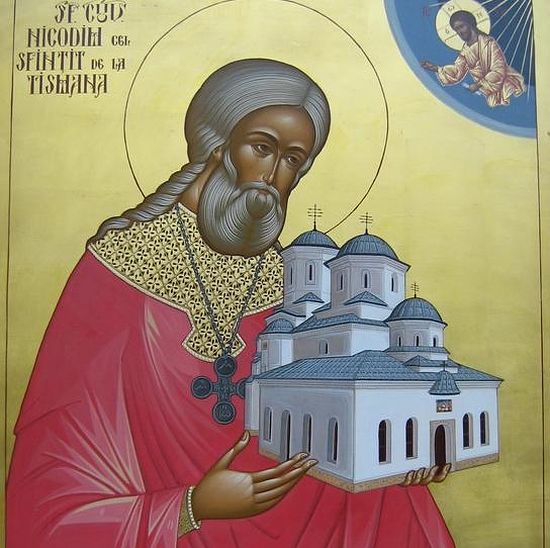
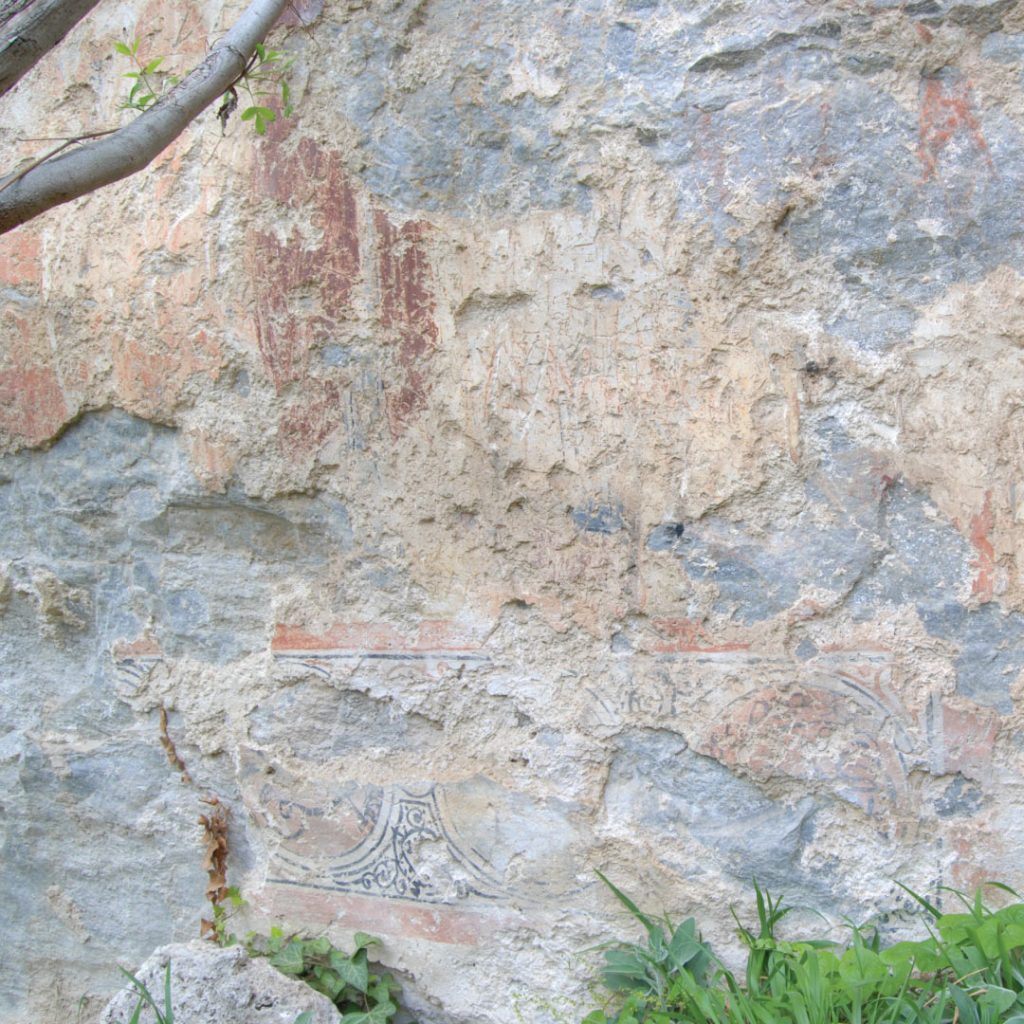
Mount Athos.St. Gregory of Sinai. St. Nicodemus.
In this period begins the earliest history of the active monastic life in the monasteries on Mount Athos. During this time, monks of Macedonian origin have left their mark. Namely, as reported on the ceiling fresco-painted decree, the monks from Ohrid, the brothers – Moses, Aaron, and Jovan from the Selima family – In the 10th century, constructed the monastery Zograf on Mount Athos.
From the 10th century, the Holy Mountain – Athos became a major centre of Byzantine monasticism, and it remains so until this day. The settlement of Athos with anchorites (hermits), is considered to have started very early, sometime in the 4th century. The founder of the first monastery Lavra in 960, was St. Athanasius of Athos.
Athos got the priority to conserve and to multiply the Eastern spiritual heritage, of the hesychastic Tradition. The task upon itself, during the diminishing and the eventual collapse of the Byzantine Empire, received the Slavic people.
St. Gregory of Sinai (1255-1346) became involved in this purpose, as an executive. In his writings, he covered the entire hesychastic Tradition to that point. Coming from Asia Minor, St Gregory received monastic tonsure at the monastery of St. Catherine on Mount Sinai, where the memory of St. John of the Ladder was still alive. Yet, his “keeping of the mind” and the noetic prayer was not learned at Mt Sinai, but from a monk named Arsenios, in Crete, where he later lived. From Crete, he journeyed to Mount Athos, where he became the spiritual father of the hermitage called Magula, and was surrounded by many diciples. Around the year 1325, the monks who lived outside the protective walls of the great monasteries, became victims of the constant Turkish attacks. Therefore, St Gregory was forced to leave Athos and find refuge in Parorija, in the Thrace mountains near the Byzantium-Bulgarian border, where he continued to teach and spread the doctrine of the Jesus’ prayer in the Slavic countries.
In the writings and doctrines about the prayer from St Gregory of Sinai and the multitude of his disciples and spiritual successors, we come across chapters in which is united the whole secret of the Divine Name and the spirituality of the noetic prayer with the mystical life in Jesus Christ.
One of the main reasons why many of the holy disciples of Gregory remain nameless (unknown) in the Church and folk Tradition, is the conscious hiding of their own struggle and origin. By practicing the “wise action”, i.e. “the continuous prayerful hesychasm” and the strict restraint, guarding their heartfelt commitment to God, they claimed that their home town is Upper Jerusalem that is above (in heaven), and their brothers and cousins – the celestial armies. As far as their homeland, they considered themselves to be edemit’s (residents of the garden of Eden) – paradise people, created in the image and likeness of God. Working along the Aegean, through the Balkans and Romania, all the way to the borders of Moldova and Ukraine, borders which include Matka. Many of them, hermits and Sinai’s in the 14th and 15th centuries spiritually prepared the Balkans to bear the Islamic invasion from Asian Minor, and slavery lasting for many centuries.
He was born in the Macedonian city of Prilep. He is one of the many fruitful offspring of the magnificent lineage of the Sinaiites, who, inspired by their leader and beacon, the Venerable Gregory of Sinai, taught the word of the mind-and-heart Jesus prayer to those who were thirsty to purify their hearts with God and to live and die only for the Lord. From childhood he was brought up in piety and in every chastity. As a very gifted boy, he devoted himself zealously to the sciences of the day, especially the Divine Scriptures and Orthodox theology. He loved the monastic life with all his heart and prayed to God to make him a monk. God fulfilled this wish by sending to him some monks from the monastery of Hilandar on Mount Athos. He immediately went with them to Mount Athos, where he became a monk and quickly ascended with his equal ascetic asceticism, so he was honored with the rank of priest. After the death of the abbot, as a monk perfect in virtues and filled with all Divine and human knowledge, they unanimously chose Saint Nicodemus as abbot. As a great spiritual lamp, it was known and loved by the Balkan ascetics and church priest of that time. And following the unexamined paths of God, he left Mount Athos for Serbia, where the holy prince Lazar wanted to elevate him to a high spiritual position. Eager for prayerful silence in solitude, the blissful thanked the wise prince, but rejected him, and settled near Kladovo, along the Danube. Here to the shepherd, who preferred to rely on the right hand of God rather than on the honor of the honorable earthly prince, God Himself brought him a flock that was constantly growing in the Spirit and multiplying. Namely, with his sublime life, Saint Nicodemus shone so much here as well, that many monks from Mount Athos and from other parts of the Balkans gathered around him. Here he built a church dedicated to the Most Holy Trinity and introduced the asceticism of the Mount Athos hesychasts in the newly established monastery. Then, after God’s revelation, he and some of the brothers from the monastery near Kladovo crossed to the other side of the Danube and settled in the Ugrovlashki region, in the northern Banat, near the present-day city of Tour-Severin in Romania. Together with these monks, St. Nicodemus built a beautiful monastery dedicated to St. Anthony on the river Vodica. In 1374 the Vlach master Vladislav-Vlajka Vode with a charter confirmed the autonomy of the monastery of St. Anthony of Vodica. Because of his extraordinary learning and wisdom, summoned by Prince Lazar, St. Nicodemus assisted the diplomatic mission to reconcile the Serbian and Constantinople Patriarchates. Then in Wallachia, with the help of the Vlach Duke Radu I (1377 – 1384), he built the great monastery Tisman, which is located on the river Tisman, and is dedicated to the Most Holy Mother of God. Saint Nicodemus built several more churches and monasteries in Romania (the churches of Vratnu and Monastiritsu and the monastery of Prislop). All its monasteries became spiritual nurseries of monasticism and spiritual life in Wallachia, Moldavia and in general for the whole of Romania. That is why the Orthodox Romanians respect Saint Nicodemus as their educator, and name him with the auspicious name Holy. He died in the Lord on December 26, 1406 in the Tisman Monastery, where his Holy Relics rest to this day. (source MOC-OA)
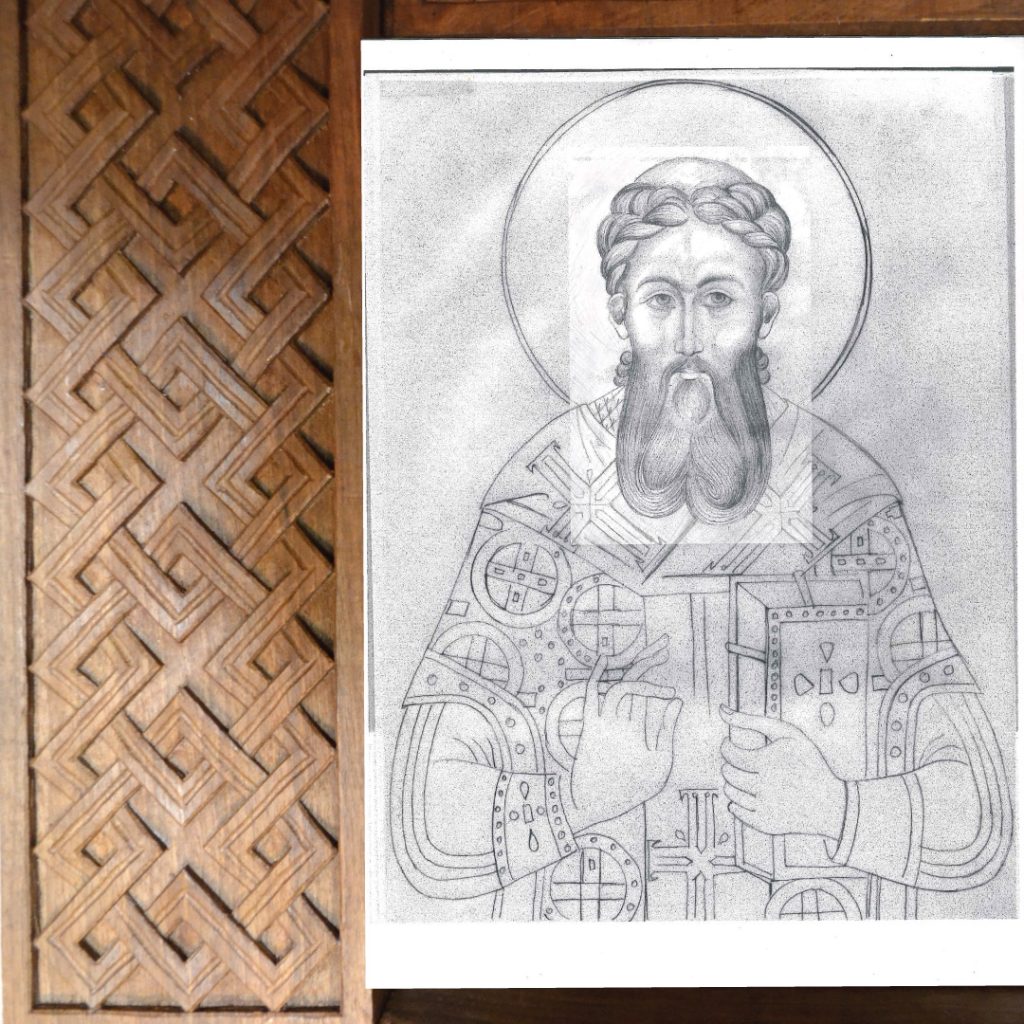
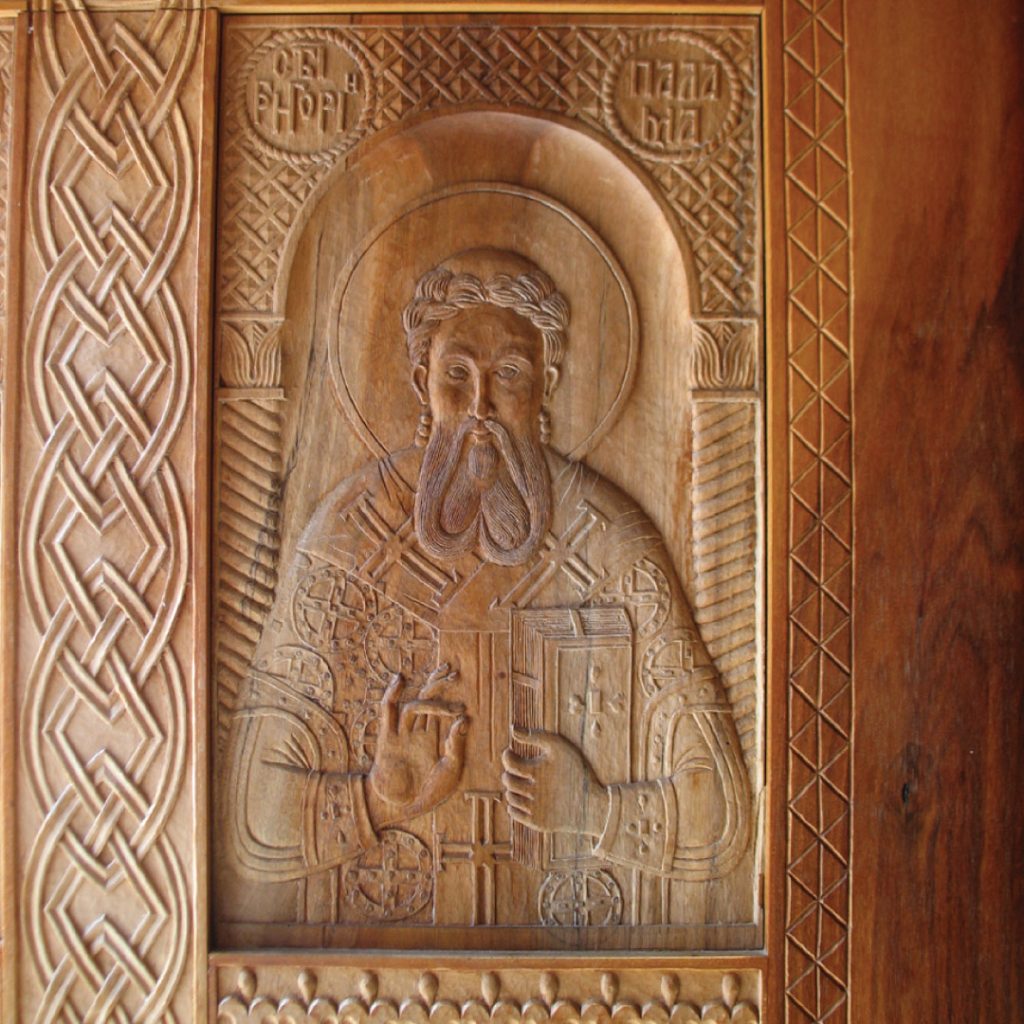
Saint Gregory Palamas
The systematic exposure to the hesychastic teachings of St. Gregory of Sinai, was preparing the grounds for the theological synthesis of another teacher of the Church – St. Gregory Palamas.
About him the very reverend Alexander Schmemann writes: “St. Gregory Palamas, an Athonite monk and later an archbishop of Solun Thessalonica (1296-1359) is undoubtedly the greatest Byzantine theologian. He essentially, was just guiding it, and with his work he restored the primeval, main line of the orthodox understanding of Christianity. It consisted in understanding that God is indeed present in the world, that we are familiar with him and that we are united not by abstract thinking, nor with “philosophical”, but ontological. Here – in the defence of the real union with God – is hidden the meaning of the Palamas teaching about ‘God’s energies’ with which the world is filled, and, thanks to the world (man), not being in communion with God, who is essentially “несознатлив”, is united with Him and can be in communion in Him, to carry Him within himself, and indefinitely to grow in his familiarity with Him. In the experience of hesychasm, with the theology of St. Gregory Palamas resurrects the whole Tradition of the Fathers of the Church. In the God-man icon of Christ and the gifts of the Holy Spirit, the Christianity is revealed as a viewing of the deificated fullness of man, and through it the “Holy communion with God” of everything in the world. “
After the fall of Constantinople, the hesychastic tradition of the East did not die. Rather, the simplicity and the essence of his teachings admired by the monks and laymen, who during the four century long Ottoman(Muslim) rule, deprived of schools, books, and church organisation, zealously guarded the treasure of the Orthodox spirituality. Thus, Mount Athos remains a major centre of the hesychastic monastic tradition.
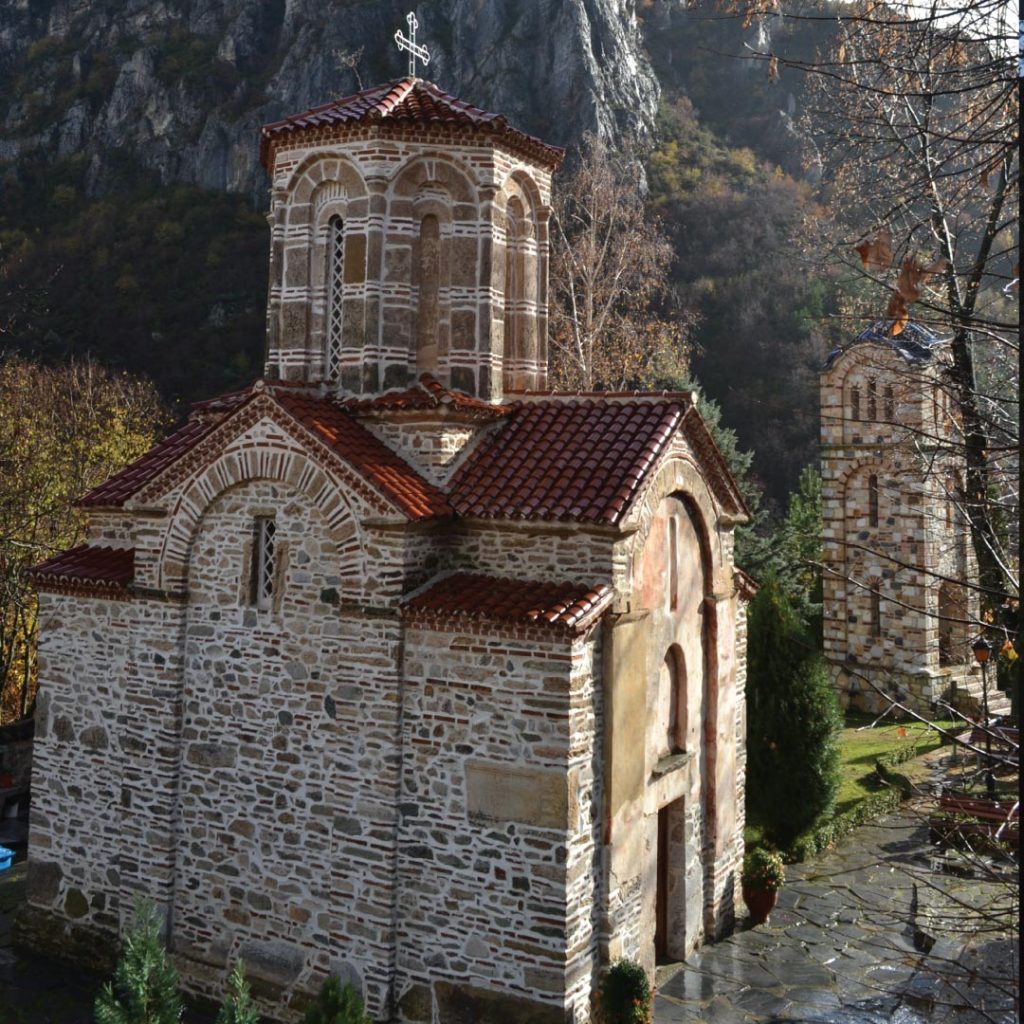
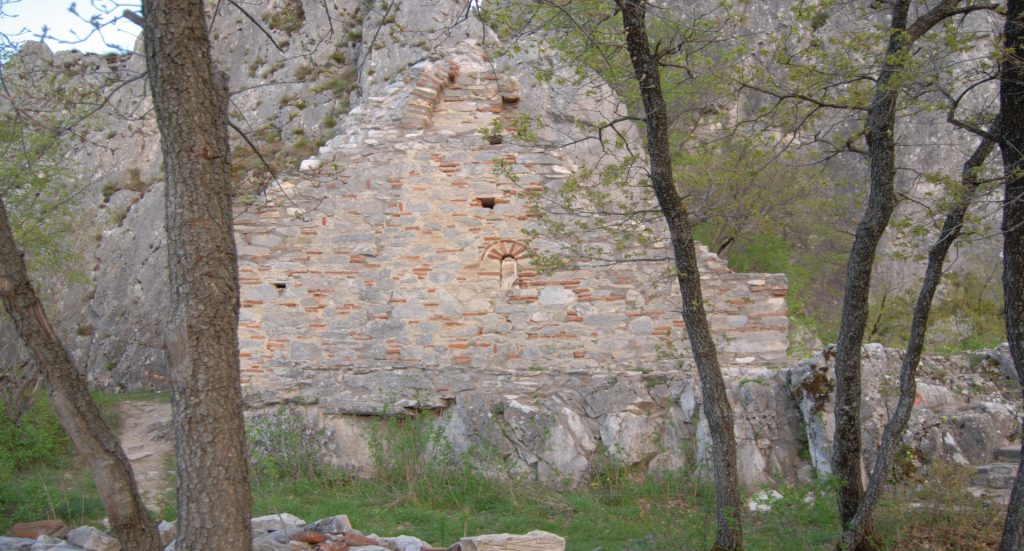
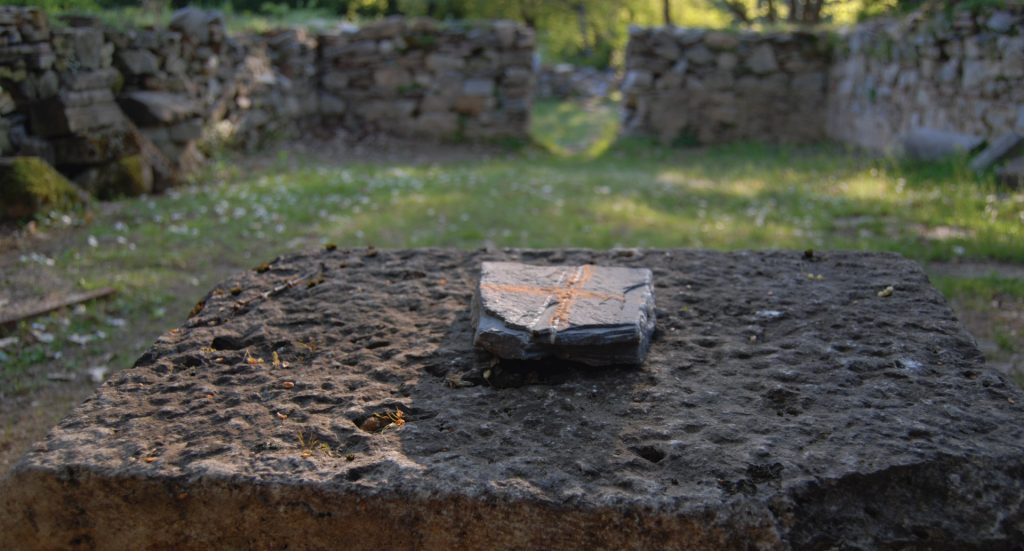
The inhabitants of Matka
Matka, during this period of the activity of the Sinai’s disciples, at the time of St Gregory of Sinai and St Gregory Palamas, can be characterised by one word – (re)construction.
Many monasteries, including the monastery Dormition of the Most Holy Theotokos-Matka (1337), St Nicholas-Shishevski (second half of the 14th century), and St Andrew (1388/89) are restored. The Church of St Nedela also dates from this time.
The influence of Mount Athos can be seen in the rebuilding of the monastery churches, all built along the lines of Athos.
At that time, in the monastery of Saint Andrew, lived a monastic brotherhood whose abbot was Kalest Cyril, and the Metropolitan John and his brother monk Macarius also stayed there during the rebuilding. A work of such depth and beauty of the fresco-painted saints, the harmony of the compositions, and the unity of motion and colour, can only have been created by an artist enlightened by God. And this work today, serves as an example for the numerous iconographers and fresco painters, who come from everywhere to view them in the monastery of St. Andrew.
The monastery brotherhood, that lived at St Nicholas-Shishevski, left a book, Minei, dated around the 14th century featuring a record, that testifies of the literary activity of this monastery: “This monastery book from St Nicolas I’m writing it in the village Shishevo”.
To live, on the other hand, in the hermitage cells and caves, is a blessing only for the ascetics who progressed to the level of illumination. There was a wealth of such people in Matka during this period, and since then has remained the toponym for the area Machin Dol; in the account about the name of the monastery Matka – mother (ID monastery) of the hermits and monastic skits; and most importantly, the way of life of these ascetics has given the name Little Holy Mountain (ref. Mt. Athos).
We have placed an emphasis on the reconstruction, because it is significant that it occurred along with the rebuilding of the hesychastic tradition throughout the Balkans, but the monasteries in Matka, together with the life of the monks, are mentioned in earlier centuries.
The monastery of St. John Chrysostom in the village Kozarevo, is the only one mentioned as early as the 11th century. Its earliest reference is in a royal charter, as being part of the metoh (lands) of the great monastery of St George in the Skopje area. This certainly doesn’t mean that the other monasteries didn’t exist.
St. Nicholas-Shishevski, was built in the 12-13 century, but even there can be found the remnants of materials from an older building.
The monastery of Saint Andrew was reestablished in the late 14th century. In the founder’s entry is written that the monk Kalest Cyril, with the brotherhood, was helping since the beginning of the rebuilding of the church (which confirms that it previously existed).

The servant of God, Marija
The only monastery of Matka which has continuous monastic life, with only minor interruptions of a few years (mainly in the 20th century), is the Monastery of the Dormition of the Most Holy Theotokos-Matka.
Reestablished in 1337 when in Skopje, the monastery of St. George Skoropostizhnik-Gorg is the most powerful monastic centre, after Mount Athos, in Macedonia (Dr. John Belchovski).
Marija, its first known inhabitant, humbly begs for the prayers of visitors:
“Why wonder, oh people, who see me in the grave? Know that, also you will be, but the memories with you are dear, mention me as well the servant of God Marija, but called Velislava. Presented in front of God on 28th September, 1372.”
This stands in a record, in church-slavonic, on the headstone, to the right of the altar.
Selishtev, states that also in the church of Theotokos Troeruchica (the three-hand), which back then was located in Skopje, at the entrance there was a tombstone on which was written: “+ was presented (passed away) the servant of God the nun Evgenia, in the summer of 1536.” This leads to the opinion that Marija is actually buried before the altar, which can only be confirmed by archaeological research/excavation.
